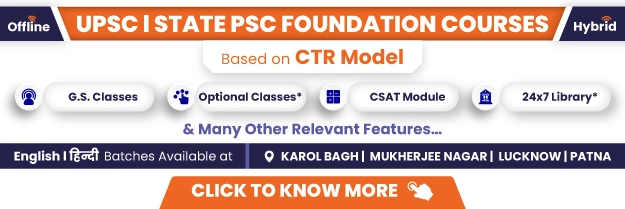Introduction
From 1931 until 1936, Lord Willingdon (1866–1941) held the positions of Viceroy and Governor-General of India. The second Round Table Conference, containing the second civil disobedience campaign, and helping to create the Government of India Bill, of 1935 were among Lord Willingdon’s most significant achievements to the Raj. He also persuaded the Congress to participate in these events. The 1935 India Act was smoothly put into effect by him. However, his tenure as viceroy came to an end just before the India Act of 1935 elections, and Lord Linlithgow took over to launch the electoral system he had worked so hard to construct.

Significant Events During His Tenure
1931: Second Round Table Conference
In England, On September 7, 1931, The Second Round Table Met. Gandhi was the Indian National Congress’s representative, while Sarojini Nayudu stood in for Indian women.
- During this conference, Gandhi emphasised the significance of the alliance between Britain and India as two equal nations.
- Congress allegedly didn’t speak for all of India’s interests, according to the government. Because other Indian communities rejected Gandhi’s arguments, the communal issue was also not settled.
1931–1934: Civil Disobedience Movement
Bengal, the United Provinces, and Punjab experienced severe turmoil as India’s political situation deteriorated. A number of regulations that the Viceroy had passed had essentially enacted “Civil Martial Law.”
- When Gandhi got back from London, Congress made the decision to pick up the Civil Disobedience Movement again. Gandhi was, however, taken into custody a week later. All around India, protests started. The major protest tactics were burning foreign clothing, processions, and picketing liquor establishments.
- The movement was treated ruthlessly by the authorities. Political parties and the Congress were deemed to be unconstitutional. The offices and assets of the parties were taken. Gandhi’s ashrams were all now under police control. It only took a few months to put an end to the movement. May 1933 saw its suspension and removal.
1932: Communal Award
The Communal Award was created on August 16, 1932, by British Prime Minister Ramsay MacDonald.
- The distinct electorate was extended to the Depressed Classes (now known as the Scheduled Caste) and other minorities after the Round Table Conference (1930–1922).
- Additionally called the MacDonald Award.
- Muslims were given their own electorate through the Indian Councils Act of 1909, which was later expanded to include Sikhs, Indian Christians, Anglo-Indians, and Europeans in the Government of India Act of 1919.
1932: Poona Pact
The Poona Pact was an agreement made in 1932 by Mahatma Gandhi, B. R. Ambedkar, and higher caste Hindu leaders on the reservation of electoral seats for the downtrodden classes in the assembly of British India.
- As a way to end Gandhi’s fast in custody over British Prime Minister Ramsay MacDonald’s decision to grant the oppressed classes separate electorates for the election of members of provincial legislative assemblies in British India, it was signed by Ambedkar on behalf of the oppressed classes and by Madan Mohan Malviya on behalf of Hindus and Gandhi.
- 148 electoral seats were ultimately chosen. Nearly twice as many seats as those made available by MacDonald’s Separate Electorate were set aside for the depressed classes under the Poona Pact.
1932: Third Round Table Conference
In November 1932, a third round table discussion was conducted in London. Since Congress was not invited, they did not go. The Labour Party in the United Kingdom also stayed away.
- Only 46 people came to this conference. A college student named Chaudhary Rahmat Ali suggested Pakistan as the name for the new Muslim “holy land” that had been created out of India.
- The Government of India Act, of 1935 was written based on a White Paper that was released following the conference.
- Congress emphasised, however, that the only viable option was a constitution created by the Constituent Assembly and chosen by the greatest number of people feasible using the Adult Suffrage principle.
1935: Government Of India Act
In August 1935, the Government of India Act was approved by the British Parliament. It was the lengthiest act that the British Parliament had ever passed.
- It aimed for the creation of a federal structure for all of India made up of units termed provinces and princely states.
- It created three lists of federal, provincial, and concurrent powers to be shared between the centre and the units. The Viceroy received residual authority.
Evaluation Of His Tenure
As the former governor of Bombay and later Madras, Willingdon was forced to cope with the effects of Gandhi’s prior nationalistic movements.
- The India Office advised Willingdon to only placate Indian opinion groups that were prepared to cooperate with the Raj. However, on January 4, 1932, Nehru and the Indian National Congress began their Civil Disobedience Movement.
- Willingdon as a result made a firm decision. He put Gandhi in prison. All members of the Working Committee and Provincial Committees were put in prison, and he forbade the formation of Congress youth organisations.
- In total, he jailed 80,000 Indian activists. Without the majority of their leaders, protests were uneven and disorganised, boycotts were futile, illegal youth organisations multiplied but had no impact, and more women became active in revolutionary protests.
|
#PW-OnlyIAS Edge |
|
Conclusion
After his viceregal reign came to an end, Willingdon was appointed Lord Warden of the Cinque Ports and elevated to the peerage as the Marquess of Willingdon. Willingdon passed away in 1941 at his London residence, having represented Great Britain at a variety of gatherings and events. In Westminster Abbey, he was laid to rest.













